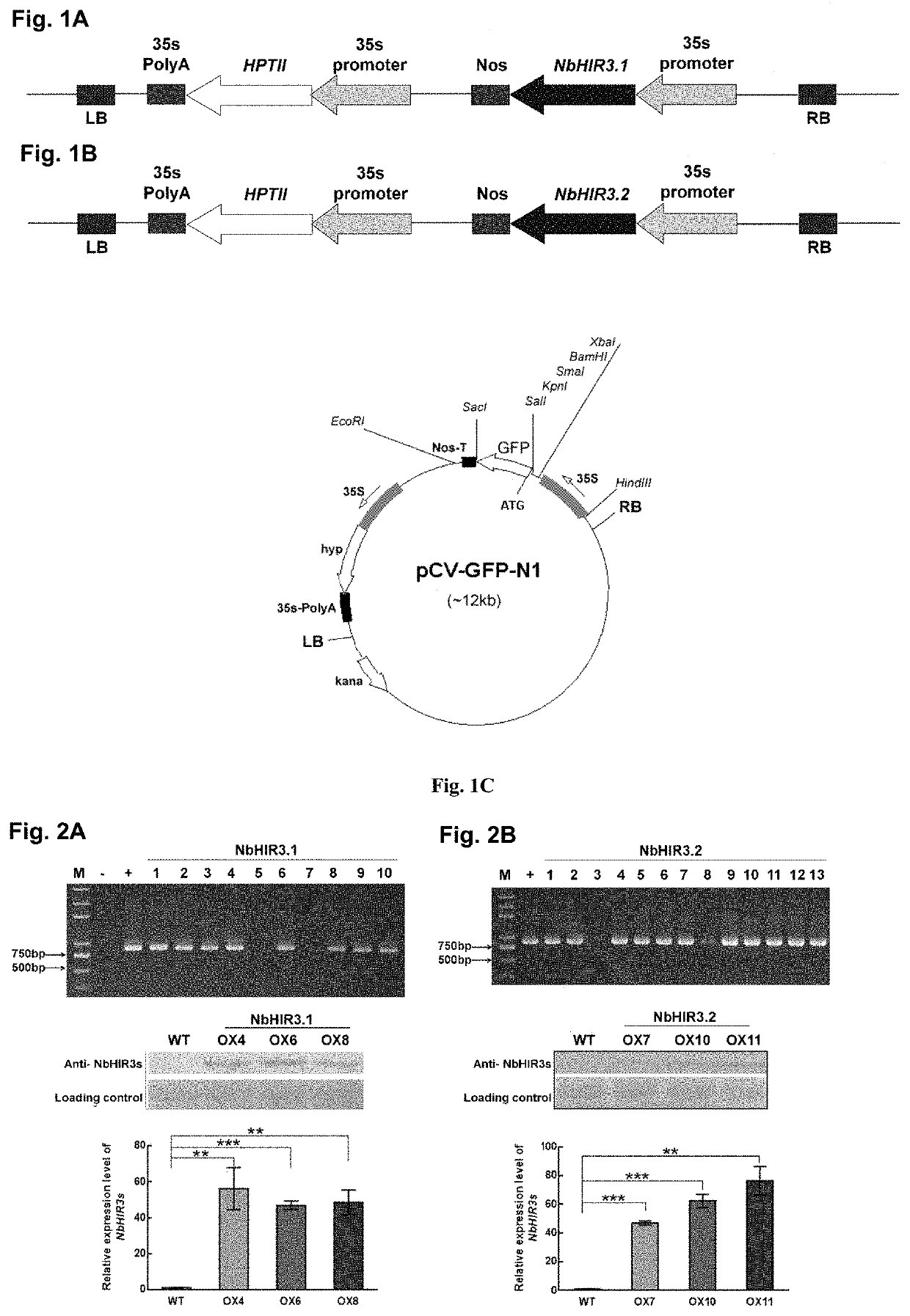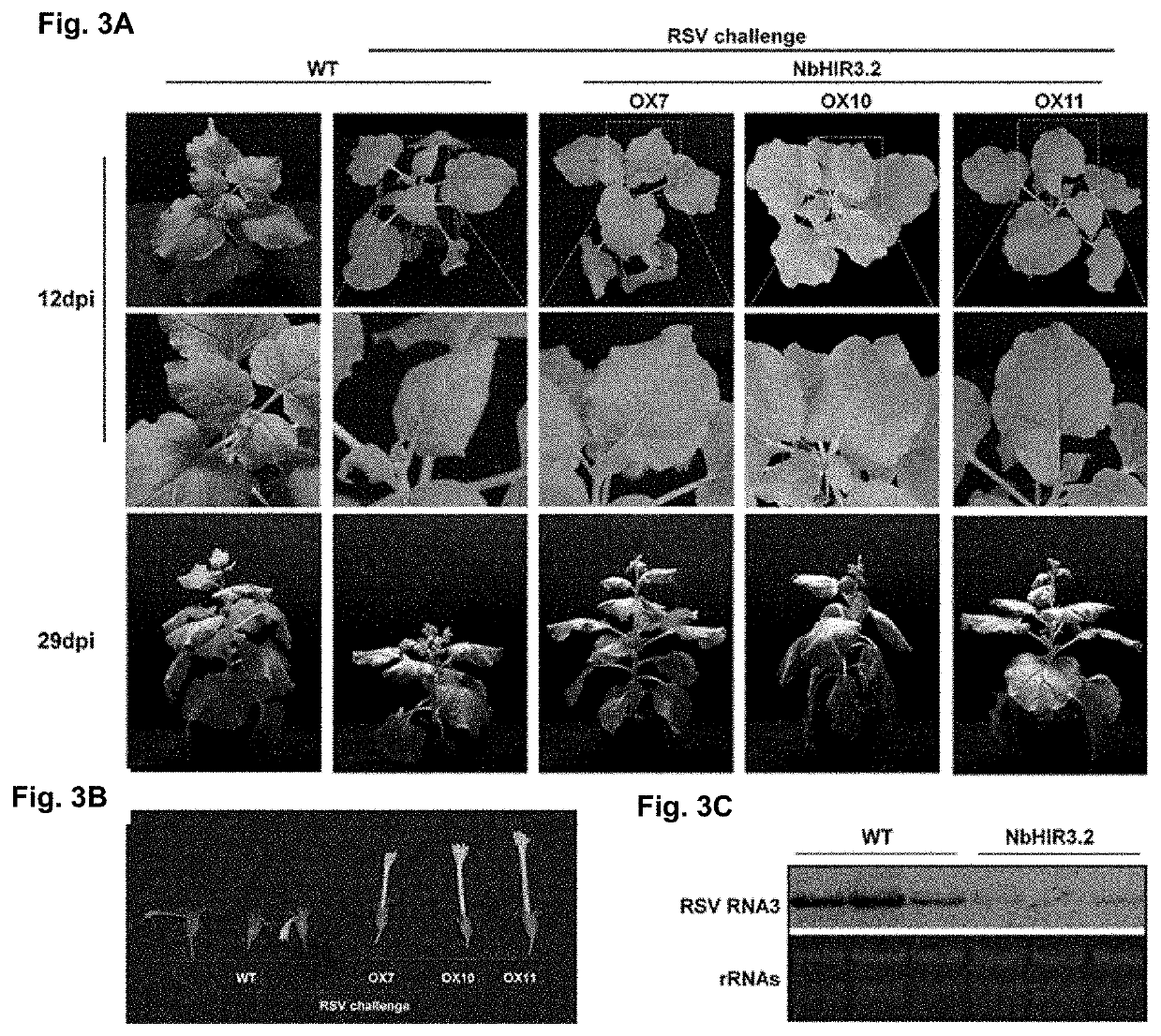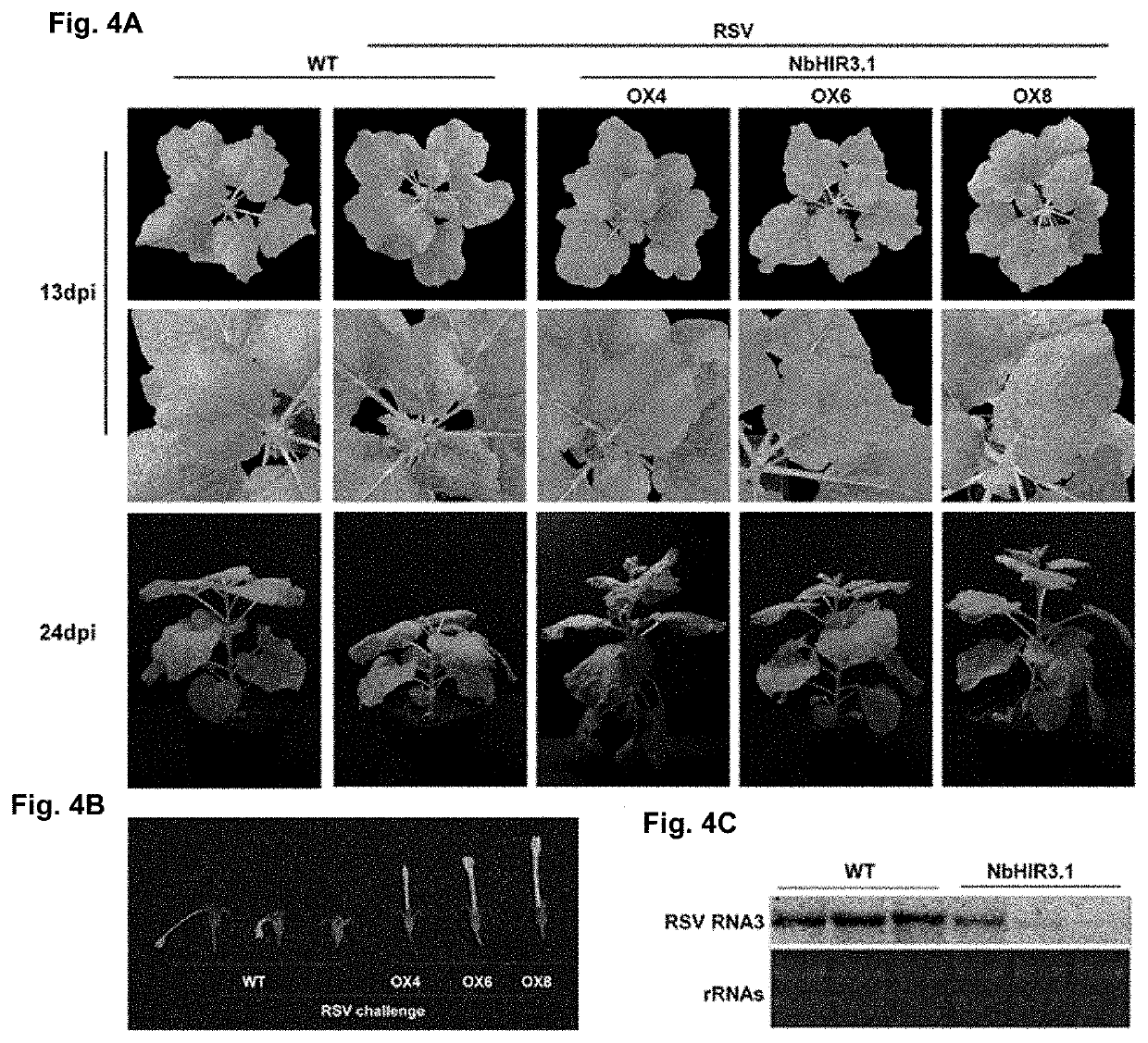Disease Resistant Plants Containing HIR3 Gene and Method for making the plants thereof
a technology of hir3 and hir3 gene, which is applied in the field of disease-resistant plants containing hir3 gene and the method of making the plants thereof, can solve the problems of hr-like lesions formation, and achieve the effects of extending the basic resistance, and reducing the sa level
- Summary
- Abstract
- Description
- Claims
- Application Information
AI Technical Summary
Benefits of technology
Problems solved by technology
Method used
Image
Examples
embodiment 1
bHIR3.1 and NbHIR3.2 Gene
[0066]The NbHIR3.1 and NbHIR3.2 gene sequences were amplified by common PCR using primers HIR3.1-ORF-f and HIR3.1-ORF-r, HIR3.2-ORF-f and HIR3.2-ORF-r and N. benthamianac DNA as template, respectively. The nucleotide sequences of the NbHIR3.1 and NbHIR3.2 were shown in SEQ ID NO:1 and SEQ ID NO:2, respectively.
[0067]The cloning process is as below:
[0068]1.1 The primers used in cloning process are as follows:
Upstream primer: HIR3.1-ORF-f: (SEQ ID NO: 3)5′-ATGGAAATGCTAACTGTGTATTGTG-3'Downstream primer: HIR3.1-ORF-r:(SEQ ID NO: 4)5′-CTATTCAGCGACCTGCACTAGCTG-3′Upstream primer: HIR3.2-ORF-f:(SEQ ID NO: 5)5′-ATGGGAATGCTAATTGTGTATTCTG-3′Downstream primer: HIR3.2-ORF-r:(SEQ ID NO: 6)5′-CTATTCAGTGACCTGCACTAGCTG-3′
[0069]1.2 Trizol Method for Extracting Total Plant RNA
[0070]Total RNA was extracted using TRIzol reagent (Invitrogen, Carisbad, Calif., USA) according to the manufacturer's protocol. Masks and gloves should be worn during RNA extraction to avoid RNA degradat...
embodiment 2
ruction
[0087]The sequences of NbHIR3.1 and NbHIR3.2 genes with corresponding restriction sites were amplified using primers HIR3.1-f and HIR3.1-r, HIR3.2-f and HIR3.2-r, and full-length NbHIR3.1 and NbHIR3.2 sequences obtained above as templates under the same PCR condition, respectively. The NbHIR3.1 and NbHIR3.2 sequences were linked to the polyclonal sites of the binary expression vector pCV1300 (Map of pCV-eGFP-N1 vector was shown in FIG. 1.2), respectively. The map of constructed vector containing NbHIR3.1 or NbHIR3.2 was shown in FIGS. 1A and 1B. More concretely, the location of GFP (fluorescent protein) is replaced by the target gene NbHIR3.1 or NbHIR3.2 to form a complete plasmid vector. Such plasmid vectors are easy to understand, and any plasmid vectors can be used, and they are also commonly used in this field.
[0088]The detection primers were shown as follows (underlined ggatcc and gagctc indicated BamHI and SalI restriction site, respectively):
HIR3.1-f:(SEQ ID NO: 7)5′-G...
embodiment 4
lants Produced by Leaf Disc Method
[0098]1) Preparation of Bacterial Solution
[0099]The positive transforming strains (embodiment 3) preserved at −70° C. were streaked on the LB plate medium containing 50 μg / ml Kan and 50 μg / ml Rif at 28° C. until single colonies formation. The single colonies were selected and shaking cultured in LB solution containing 50 ug / ml Kan and 100 ug / ml Rif overnight at 28° C.,220 rpm. The bacterial solution was diluted with fresh LB solution (1:100) and then shaking cultured at 28° C., 220 rpm until OD600=1.
[0100]2) Transgenic Plants Produced by Leaf Disc Method
[0101]Transgenic N. benthamiana plants were produced by leaf disc method. The steps were shown as below:
[0102]1. Pre-culture: Leaves of N. benthamiana at on 5-6 leaf stage with good growth were selected. The leaves were washed several times with ddH2O, then sterilized with 75% ethanol for 1 min, and then been washed several times with ddH2O. The leaves were placed on aseptic filter paper to absorb th...
PUM
| Property | Measurement | Unit |
|---|---|---|
| Volume | aaaaa | aaaaa |
| Volume | aaaaa | aaaaa |
| Volume | aaaaa | aaaaa |
Abstract
Description
Claims
Application Information
 Login to View More
Login to View More - R&D
- Intellectual Property
- Life Sciences
- Materials
- Tech Scout
- Unparalleled Data Quality
- Higher Quality Content
- 60% Fewer Hallucinations
Browse by: Latest US Patents, China's latest patents, Technical Efficacy Thesaurus, Application Domain, Technology Topic, Popular Technical Reports.
© 2025 PatSnap. All rights reserved.Legal|Privacy policy|Modern Slavery Act Transparency Statement|Sitemap|About US| Contact US: help@patsnap.com



